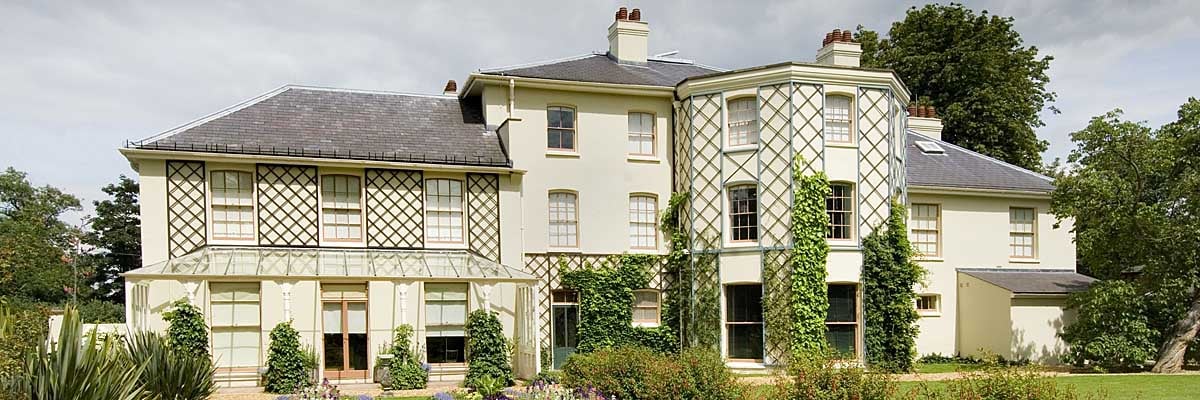Description of down house
Down House remains much as it was when Darwin lived there. Many of the ground-floor rooms are filled with family portraits, furniture and personal possessions, as they were when Darwin lived here, while the study contains his writing desk, chair and many objects connected with his work. The gardens have been restored to their appearance in his time, and some of his experiments on plant and insect life are recreated in the garden and greenhouse.

Exterior
It is still possible to discern the plain, square block of the original Georgian building behind the many alterations and additions made by the Darwins during their 40-year occupation. The original block, of three storeys and five bays, is visible at the centre of the house behind the three-storey bay that Darwin added in 1843.
Protruding to the north is the two-storey extension of 1858 that provided a drawing room and extra bedrooms above. To the south is the wing added in 1846 to provide domestic offices and a schoolroom on the first floor.
Interior
The ground-floor rooms of the house have been recreated to look as they did in Darwin’s time, with the help of photographs taken in the 1870s and many original artefacts which were returned to Down House after it became a museum in 1929.
The highlight of the ground floor is Darwin’s Old Study, which contains almost every original piece of furniture and dozens of Darwin’s possessions, including some from his time on HMS Beagle.
The room appears unremarkable, square and rather small. But being on the north side of the house, it is disturbed by only an hour or two of direct sunshine in the early morning and, with its tall windows further shielded by wooden shutters, provided the perfect cold-light conditions that Darwin found best for undertaking detailed scientific work. He spent up to six hours a day in his study, examining specimens, dealing with correspondence and writing his books.
Darwin arranged the furniture for practicality and convenience, centred on the rectangular Pembroke table, which was usually scattered with scientific instruments, books and correspondence. He sat on the mahogany-framed horsehair armchair at one corner of the table. To his left was the baize-topped drum table laid with glass-stoppered bottles and insect specimens stored in tiny pillboxes.
On the south wall, glazed-fronted bookcases house a portion of Darwin’s scientific library.
The other ground-floor rooms are crowded with the family’s furniture and paintings. The first-floor rooms now house an exhibition about Darwin’s life and work, but in his day were bedrooms and studies. At the south end, above the domestic offices was the schoolroom, where a cupboard shelf still bears a teenage inscription carved by Darwin’s eldest son, William, ‘W. Darwin 1853’.
Gardens
The gardens at Down were central to Darwin’s work, and the place where he conducted numerous investigations.
Closest to the house is a lawn, which was not just a place for recreation but where Darwin carried out various experiments, such as identifying species in one plot of lawn, and observing the activities of worms beneath a ‘Wormstone’.
Beyond the lawn is the kitchen garden, which is walled on three sides, with hedging on the south to let in sunshine. A wide range of vegetables is grown there today, many of them Victorian varieties noted by Darwin.
In the late 1850s Darwin took over a corner of the kitchen garden for his ‘experimental beds’, where his investigations into plant evolution led to several key discoveries. Some of these beds have been replicated in the present planting.
Bordering the north wall are Darwin’s greenhouses, which provided the specialised growing environment he needed for experimentation. It was here that he made revolutionary discoveries about the reproductive behaviour of plants in the final years of his life. They are now stocked with many of the same plant specimens that Darwin cultivated, including orchids, carnivorous plants, wild cucumber and passionflower.
At the outer edge of the property, beyond the walled kitchen garden, Darwin laid down the Sandwalk, a quarter-mile stone and sand path that formed the basis of his regular daily walks until the final weeks of his life. It was a place for meditation, known as his ‘thinking path’.
READ MORE ABOUT DOWN HOUSE